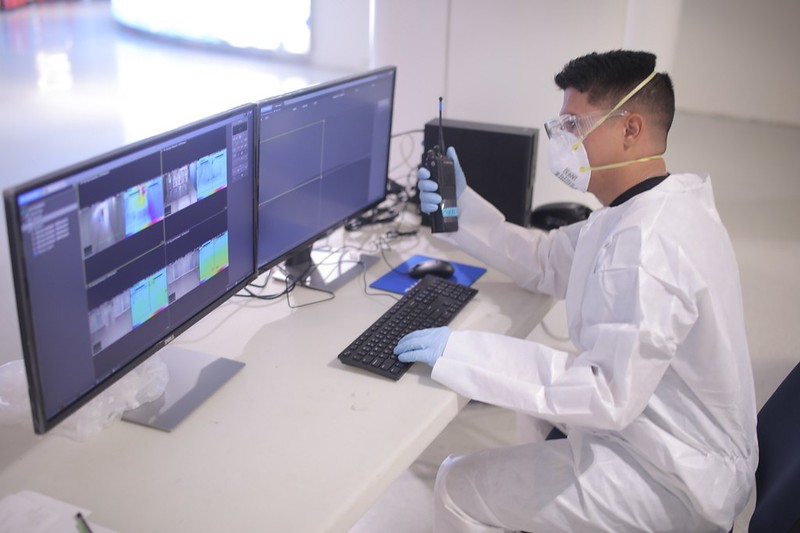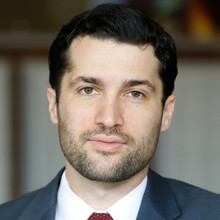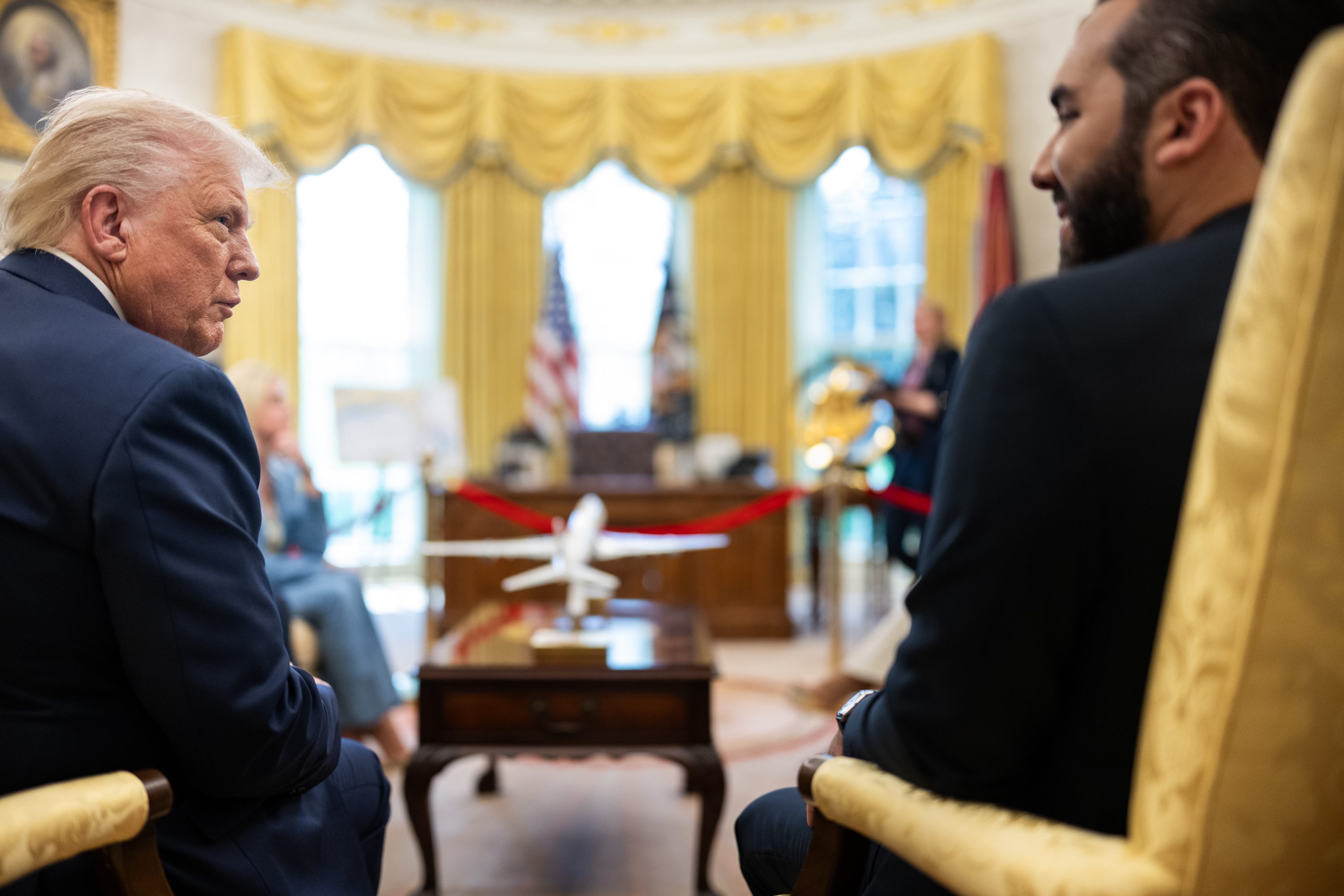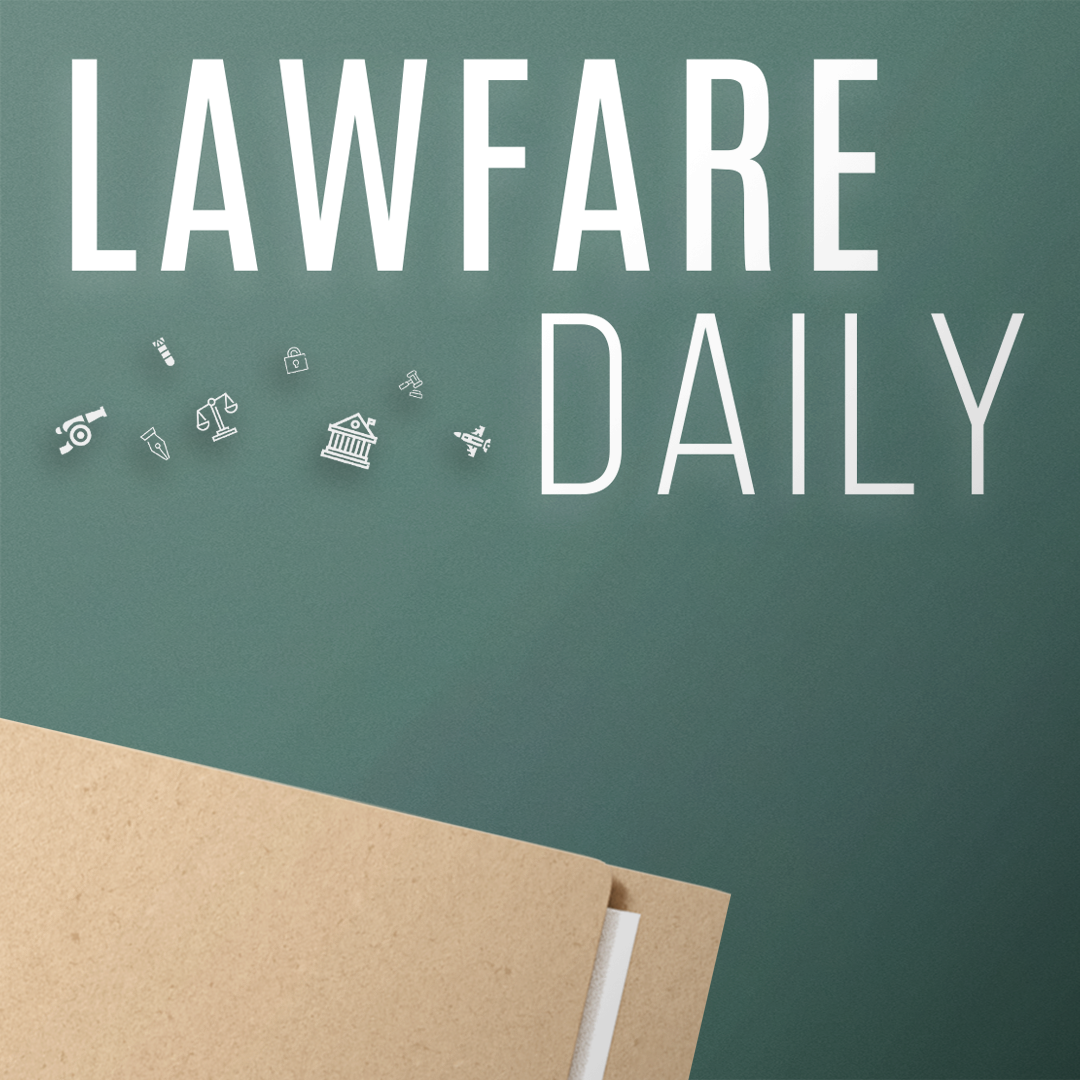Disease Surveillance and the Fourth Amendment
With the right safeguards, aggressive disease surveillance is likely permissible under the Fourth Amendment.

Published by The Lawfare Institute
in Cooperation With

Like governments around the world, the United States is struggling with the “coronavirus trilemma”: It wants to protect lives, ease social isolation, and protect privacy and civil liberties, but it can do only two of those at the same time. In particular, and as South Korea’s successful management of the coronavirus shows, extensive surveillance may be the only way to control the outbreak while preserving some degree of normalcy for economic and social life. I’ve argued that the longer the pandemic drags on, the more willing (and rightly so) people will be to trade in some of their privacy for the freedom to work and play. There is already significant support for location tracking among both policy experts and the general public, and we should expect this sentiment to increase.
A key issue will be determining what policy responses to the coronavirus can be squared with the requirements of the Constitution. Many constitutional provisions are implicated—for example, the Due Process Clause may restrict the government’s ability to quarantine people suspected infection, the Commerce Clause (and its judicially crafted inverse, the Dormant Commerce Clause) bears on the question of division of power between the federal government and the states, and the open-ended nature of Article II raises questions about the president’s inherent powers to act in the absence of congressional authorization. For now, I want to focus on the Fourth Amendment, which prohibits “unreasonable searches and seizures” and requires that warrants be supported by probable cause, and which will determine the outer bounds of permissible surveillance at the federal and state levels.
A word of warning: Any analysis is going to be highly tentative, for two reasons. First, Fourth Amendment analysis is highly sensitive to factual details about both the surveillance at issue and the broader context (for example, the severity of the pandemic). In the absence of concrete proposals, any analysis is going to necessarily be at a fairly high level. Second, the relevant Fourth Amendment doctrines—the third-party and special needs doctrines—are, even by the standards of constitutional law, in flux and without much coherence. Any predictions will thus be somewhat speculative.
I’ll first give an overview of the relevant Fourth Amendment law and then apply it to three types of disease surveillance that are likely to be relevant in the near term: tracking the occurrence of coronavirus infection, contact tracing and quarantine enforcement. Since the Fourth Amendment imposes no restrictions on voluntary sharing of information with the government—on the part of either surveillance targets or third parties who may have information about the targets—I’m going to address only mandatory reporting. I will also address the implications of the Fourth Amendment on surveillance. The Fourth Amendment has other applications to disease control that I don’t address here—for example, whether individuals can be subject to quarantines and forced medical testing, which raises the question of government “seizures” (of the body).
A threshold question in any Fourth Amendment analysis is whether the government activity is a “search.” An activity is a search and thus triggers the Fourth Amendment if it infringes on a reasonable expectation of privacy (the Katz test) or it involves a government trespass (the Jones test). Different forms of disease surveillance could trigger the Fourth Amendment under one or both of these tests. For example, any government surveillance program that required individuals to download an app on their phones might constitute a Fourth Amendment search under the trespass test, since it would interfere in individuals’ property interests—that is, to control what is on their devices. By contrast, if the government were to track people’s movement by directly surveilling cellphones—for example, though IMSI (international mobile subscriber identity) catchers, which mimic cell towers—that might violate a person’s reasonable expectation of privacy.
Things become more complex if the government were to compel third parties—cellphone companies, internet platforms, medical-device makers or health care providers—to turn over data. A long-established carve out to the Katz reasonable-expectation-of-privacy test is the “third-party doctrine”: People cannot claim a reasonable expectation of privacy in information they have voluntarily handed over to a third party and that the government subsequently acquires. But the third-party doctrine is in flux, and its precise contours are unclear. For example, in the landmark Carpenter v. United States case from 2018, the Supreme Court held that the third-party doctrine did not apply to a week’s worth of cellphone location data that the government had acquired from a mobile provider. Unfortunately the court did not provide much guidance on how to apply Carpenter’s reasoning to different fact patterns—smaller amounts of more-precise location data, larger amounts of less-precise location data, nonlocation data (for example, health data) that nevertheless reveals intimate information about an individual, and so on. All we can say is that, after Carpenter, courts are going to have to decide whether data that would normally be excluded from the Fourth Amendment’s scope under the third-party doctrine is nevertheless protected because it is particularly sensitive and revealing.
Assuming the Fourth Amendment does apply to the government surveillance, the Fourth Amendment requires that the activity be “reasonable.” In most cases reasonableness requires that the government have probable cause and get judicial authorization—a warrant—before conducting the search. In some cases this may be feasible. For example, if the government gets a reliable tip that an infected individual has violated a quarantine order, that might be enough to establish probable cause that a crime has been committed (the quarantine violation) and thus justify a warrant for location data to confirm this fact.
But for many public health purposes, strict adherence to a warrants regime may not be required. Specifically, warrants are not required when “exigent circumstances” make getting them unfeasible. For example, police do not need a warrant to arrest a fleeing suspect or to prevent the destruction of evidence. Nor is a warrant required when police are engaged primarily in a “community caretaking” activity—for example, when they are trying to track down someone who is experiencing an imminent medical emergency. But courts tend to construe these exceptions narrowly and, most importantly, they still require police to have probable cause that the underlying activity is taking place. These exceptions to the warrant requirement thus are unlikely to be sufficient for disease surveillance, which requires gathering ongoing data on a wide population (rather than individual by individual), of which few if any may have clear symptoms.
For this reason, any disease surveillance program is likely to be evaluated under the Fourth Amendment’s “special needs doctrine” (also called the “administrative search doctrine”), by which courts sometimes permit warrantless surveillance with less than probable cause if getting a warrant would be impracticable; the search is aimed at something other than a traditional law enforcement purpose; and the search is, all things considered, reasonable.
The difficulty is that the special needs doctrine is by far the least coherent and unsettled part of Fourth Amendment doctrine. Every element in the test is contested, lacking coherent theoretical foundations and full of seemingly arbitrary distinctions that appear to reflect little more than the gut instincts of shifting majorities on the Supreme Court. For example, vehicle checkpoints are permissible when aimed at drunk driving but not at intercepting drugs. Discretionary stops of vehicles to check licenses are not permitted, but similar stops of ships are. Searches of students generally require some degree of individualized suspicion, but student athletes or anyone engaging in extracurricular activities can be subjected to blanket mandatory drug testing. It remains difficult to predict when the courts will authorize nontraditional surveillance under the special needs doctrine.
Nevertheless, the cases suggest some factors that courts routinely consider. First, courts consider the proportionality of the government action. This inquiry balances the intrusiveness of the search against the expected government benefits of that search and also asks whether the government could achieve its objective using less intrusive means. Second, courts are more comfortable when warrantless searches are conducted pursuant to legislative authorization and strict administrative guidelines. Legislative authorization is important for democratic and separation-of-powers reasons, and administrative guidelines help limit the discretion that the front-line enforcement officials have. Third, judicial supervision—in particular ex ante authorization or the ability of the target to challenge the search before it is executed—improves the chances that the search will be deemed constitutional, even if judges aren’t applying the probable cause standard. Fourth, searches that can be done on an individualized basis are preferred to “dragnet” searches. Finally, the less that law enforcement has access to or uses the data in criminal prosecutions, the more likely courts are to find that the program is not intended for “ordinary law enforcement purposes” and is thus permissible.
We can now begin to apply the Fourth Amendment to different kinds of disease surveillance. First, disease reporting. All states require health care providers to report information about infected diseases, and the federal government has extensive disease-reporting programs as well. Traditionally these did not raise any Fourth Amendment concerns, chiefly because the third-party doctrine excluded such data collection from the Fourth Amendment’s scope. Carpenter may change this, although, given the public health interests at stake and the long history of mandatory disease reporting, such programs would almost certainly pass muster under the special needs doctrine.
Second, contact tracing. Traditional contact tracing involves a manual process by which infected individuals are interviewed and asked with whom they came in contact, so that those individuals can be tested and monitored. But as a group of Oxford researchers wrote in Science, “traditional manual contact tracing procedures are not fast enough for” the coronavirus. They recommend the widespread use of a contact tracing app that would use location tracking to detect contact with an infected person. If the government requires people to download such an app on their phones, that might trigger the Fourth Amendment under the Jones trespass test. If instead the government were to collect large amounts of location data from companies (in order to do contact tracing), that would likely trigger the Fourth Amendment under the Katz reasonable-expectation-of-privacy test, especially in light of Carpenter.
Thus the constitutionality of contact tracing would hinge on the special needs analysis. Here a lot would depend on how the factors listed above applied to the specific contact tracing program at issue—that is, how effective the contact tracing program was, what safeguards were built into the program, and so on. This is particularly important because contact tracing requires surveillance not just of infected individuals but of all the individuals the infected person might have come into contact with. This means that the government will need to collect information on individuals it has little individualized suspicion to think have contracted the virus. A robust contact tracing program would thus raise constitutional concerns similar to those regarding the National Security Agency’s telephony metadata program under Section 215 of the USA Patriot Act.
Finally, location surveillance to enforce quarantine orders. As above, a threshold question is how the government collected the information at issue. If the government required infected individuals to download a location-broadcasting app on their phones—or, in an extreme case, to wear a physical device, like a GPS bracelet—that would almost certainly trigger the Fourth Amendment under Jones. If the government instead tracked the quarantined person’s phone directly (for example, through IMSI catchers) or indirectly (by compelling the disclosure of location data from the cellphone provider), whether the activity was a search would likely turn on how much information the government acquired. And whether the search was nevertheless reasonable in the absence of a warrant would turn on the intrusiveness of the search relative to its importance in enforcing quarantine. Broad, constant surveillance would likely not pass constitutional muster given that enforcing a quarantine does not require constant surveillance of people while they’re in the quarantine zone but, instead, only when they leave it.
By contrast, if the government program only disclosed when individuals left the quarantine zone, that would substantially strengthen its argument for constitutionality. Indeed, such a program (absent a physical intrusion into the quarantined person’s phone) might not even count as a Fourth Amendment search at all. Under “binary search doctrine,” government action that only discloses whether or not some contraband or other illicit substance is present is not a search, on the theory that no one has a reasonable expectation of privacy in breaking the law. The binary search doctrine has been most commonly applied in the context of drug-sniffing dogs or drug field tests, but the same logic might apply here. Especially if leaving a quarantine zone would violate the law, a system that notified the government only when someone left the zone might avoid Fourth Amendment scrutiny altogether.
In the background to all this doctrinal analysis is the question of the role of the Fourth Amendment—and the Constitution—in times of emergency. On the one hand, courts tend to give the government a lot more leeway in emergencies. We might expect the same in a pandemic situation, especially at the beginning, when there is less information and courts have little basis to question government representations about necessity or effectiveness.
On the other hand, emergency powers are not limitless. There are a number of safeguards that can be built into emergency powers—and that courts might take into account—which can limit the possibility for abuse without harming efficacy. For example, courts may give the government more leeway when the action is taken pursuant to a formal invocation of emergency, especially if it is also ratified by the legislature. Sunset clauses (as in the United Kingdom’s recently enacted Coronavirus Act), can provide an assurance that emergency powers will not be permanent. Transparency as to how the program is operating can increase accountability to the general public and civil society watchdog groups. And, above all, the emergency response must be limited to what is necessary to deal with the emergency; courts will (or at least should) examine the government program for “surveillance creep.”
To reiterate, this analysis is deeply provisional. We are confronted with a truly unprecedented situation (in both the legal and nonlegal senses of the term), and much will depend on the specific details of future disease surveillance programs. Part of my reason for writing this post is to encourage other Fourth Amendment scholars to weigh in and do their own analysis of how they believe the law applies to the coronavirus crisis. This legal spadework is important, if only to give policymakers and legislators as much guidance as possible as to what options are constitutionally permitted to fight the coronavirus and future pandemics.



.jpg?sfvrsn=676ddf0d_7)

